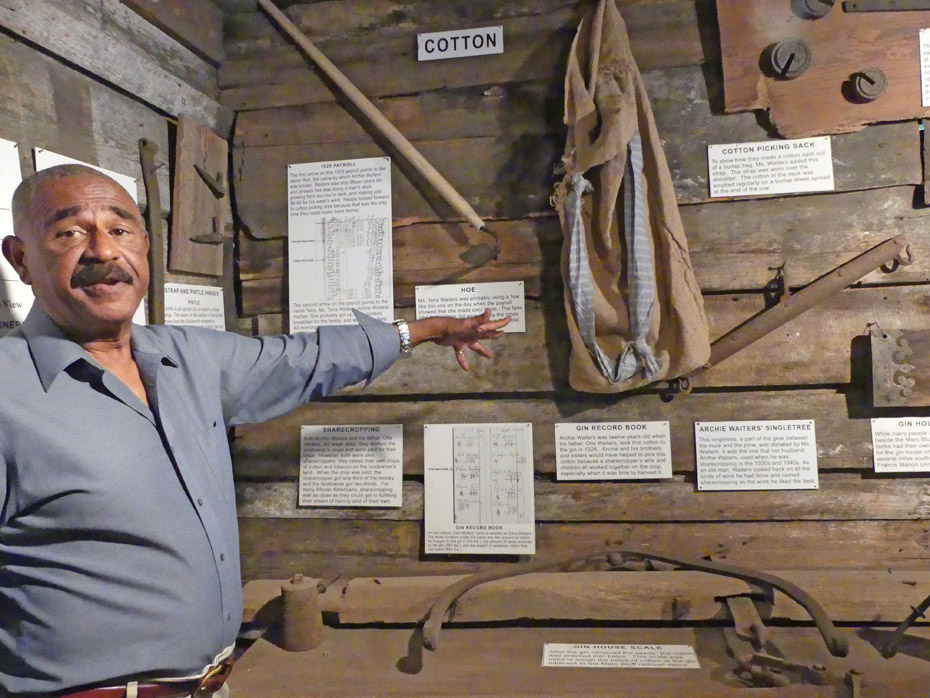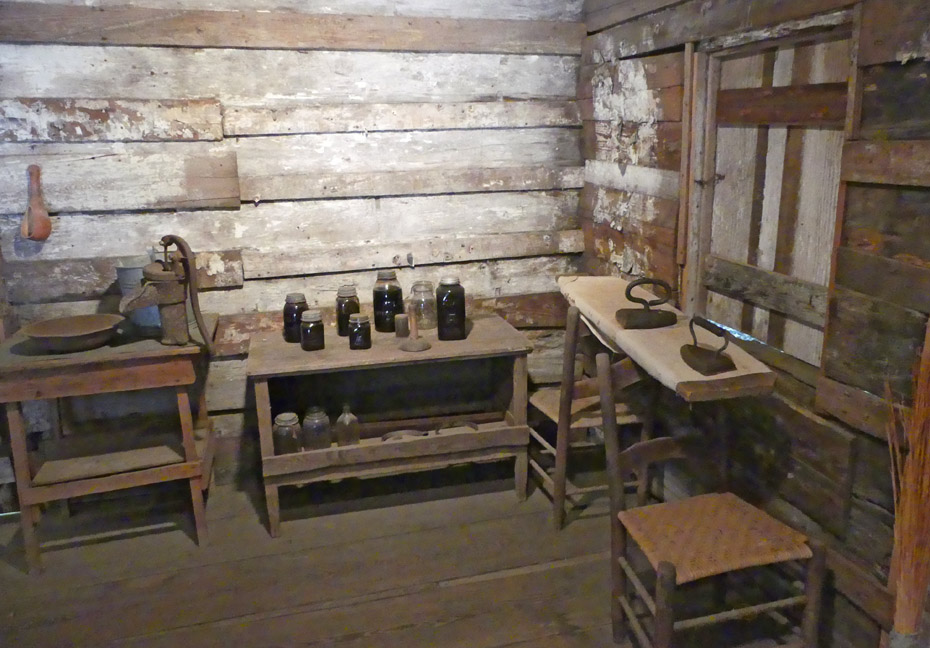
|
|
|
|
|
Two of the original eight slave cabins from what was once the Gregg Plantation now part of Francis Marion University in Florence County, South Carolina, tell that story. Karl McAlister, Circulation Coordinator in the library at Francis Marion University and Coordinator of the Hewn Timber Cabins, gave us a very detailed look at what life was like for those folks.
The tools and photos on
the inside give a view of the inhabitant's lifestyles.
Karl introduced us the last family who lived in the
cabin called "Ms Catherine's Cabin" built in 1836.
Waiters Family still lived in it until 1965. The family
started with Mr Alex Gregg an enslaved man on the Gregg
plantation; he married first Emma Piglott and after she
died, he married Florence Gregg. Alex and Emma's
daughter, Tena, married Otis Waiters. Their son Archie,
his wife, Katherine King, and their 12 children were the
last to live in this cabin. Karl told us that today,
some of the Waiters grandchildren attend Francis Marion
college and still live in the area.
|
Connect with us on:
American Roads and | ||
|
Public Disclosure--
Please Read I recently learned of a FTC law requiring web sites to let their readers know if any of the stories are "sponsored" or compensated. American Roads and Global Highways' feature writers are professional travel writers. As such we are frequently invited on press trips, also called fam trips. Most of the articles here are results of these trips. On these trips most of our lodging, dining, admissions fees and often plane fare are covered by the city or firm hosting the trip. It is an opportunity to visit places we might not otherwise be able to visit and bring you a great story. However, no one tells us what to write about those places. All opinions are 100% those of the author of that feature column. |
|||
|
Privacy Policy/ Archives /
Contributors /
Subscribe to
American Roads Books by
Kathleen Walls /
Contact /
Sponsor or Advertise/ American Roads & Global Highways Home Page
|












